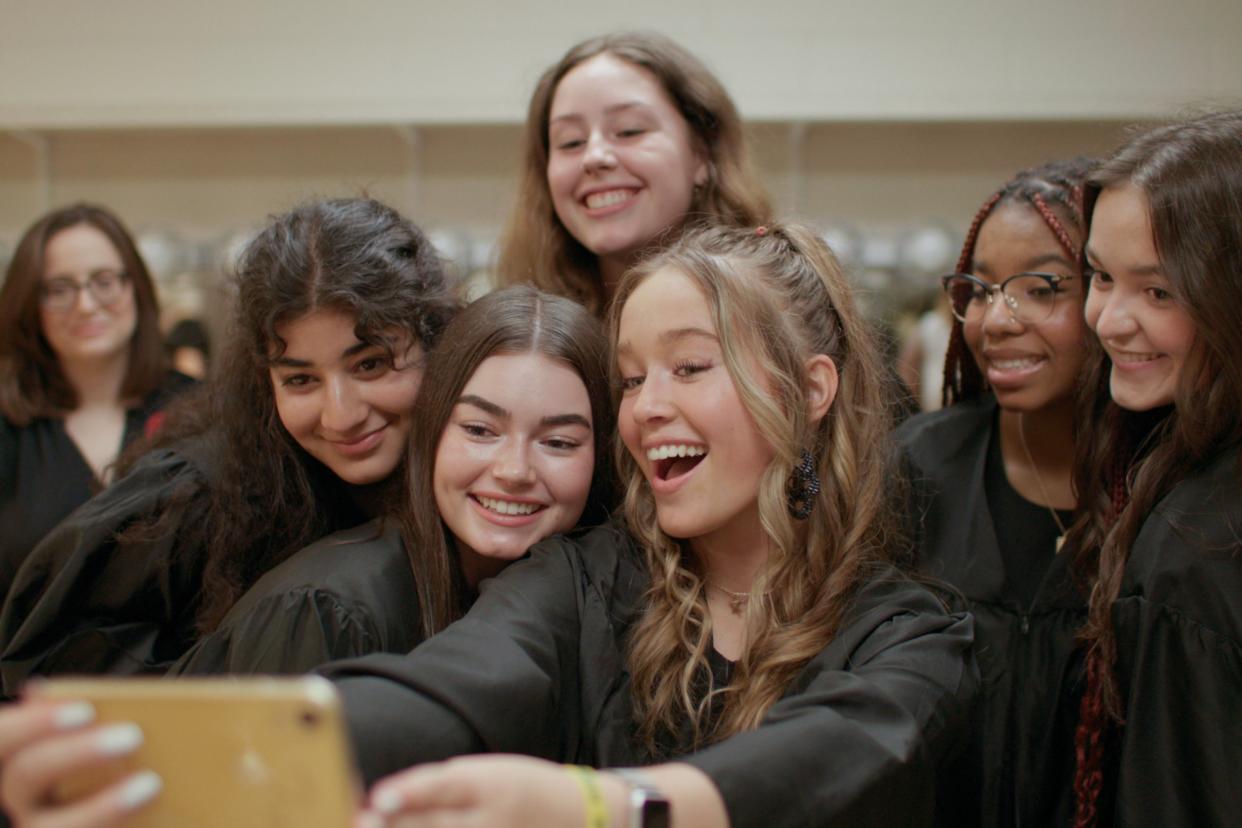A Documentary Filmed in the Shadow of the Dobbs Leak Is Both Inspiring and Devastating

- Oops!Something went wrong.Please try again later.
The title of Jesse Moss and Amanda McBaine’s Girls State prompts you to expect a distaff equivalent to their 2020 documentary Boys State, which found a group of male high school students forming a mock government in the blustery mold of the Trump years. But it becomes clear early on in the new movie, which is now in theaters and streaming on Apple TV+, that the girls’ experience is far from an exact mirror of the boys’.
The discrepancies between the gender-split programs, which are run annually by the American Legion, are highlighted by the fact that in Missouri, where McBaine and Moss shot in the summer of 2022, the two were held simultaneously, on a campus a short drive outside St. Louis. The boys are free to roam as they wish, but the girls are forbidden from venturing outside the dorms without a buddy, and while the boys get pep talks from elected officials, the girls learn songs and do group calisthenics. In her review of Boys State, Slate’s Madeline Ducharme noted how the boys confidently put themselves forth with identitarian labels like “right-wing libertarian” and “big-time capitalist.” Perhaps it’s the difference between shooting in bright-red Texas and purplish Missouri, but it’s striking how much gentler Girls State’s participants are in putting themselves forth. Even Emily Worthmore, a peppy blonde Christian who tells the filmmakers she’s decided to use Girls State as a coming-out party for her political orientation, tends to couch it in language: “I’m more on the conservative side.”
Where Texas’ Boys State came off as a bit of a MAGA incubator, Missouri’s Girls State seems, at least based on McBaine and Moss’ choice of protagonists, substantially more progressive. Where Boys State’s Steven Garza, the son of a Mexican immigrant, faced open racism in his campaign for office, Girls State’s Tochi Ihekona, whose parents emigrated from Nigeria, finds her anxiety about spending a week in the overwhelmingly white environment falling away as the days pass. (At one point, she goes as far as to say she hasn’t experienced a single microaggression, before reconsidering and realizing that actually, she has.) But while the diverse group of young women vying to become the next generation of political leaders may stir warm feelings about the state of the youth, their optimism is sorely tested by the leak, two springs ago, of the Supreme Court opinion that would end up overturning Roe v. Wade. What good does it do to instill young people with a sense of promise and potential when generations of progress are being undone in the same instant?
It’s the most minor of spoilers to reveal that, because Girls State follows multiple young women who are vying for the same offices—including governor, the most powerful, and a seat on the state Supreme Court—some of them are going to lose. And it’s when they do that the movie becomes the most inspiring. It’s a devastating blow when the girls, all overachieving superstars at their own high schools, find themselves facing off against their equals and have to swallow the unfamiliar feeling of being beaten fair and square. The movie’s opening credits play over photos of high-achieving women like Condoleezza Rice and Sandra Day O’Connor, but how many of them started off their careers in defeat?
Girls State’s most engrossing characters don’t wind up being those who prevail, but those who persist, who dust themselves off and find a way to keep going forward. Anyone can lead when they’re always out in front, but it takes more character to absorb a defeat and find a new battle to fight. Watching the girls process the leak of the Dobbs opinion—and later making abortion access the subject of a case before their mock Supreme Court—is vividly and unpleasantly like reliving the end of a national right in real time. (It wouldn’t be off-base for the movie to lead with a trigger warning.) But they press on, and leave us something to look up to.

